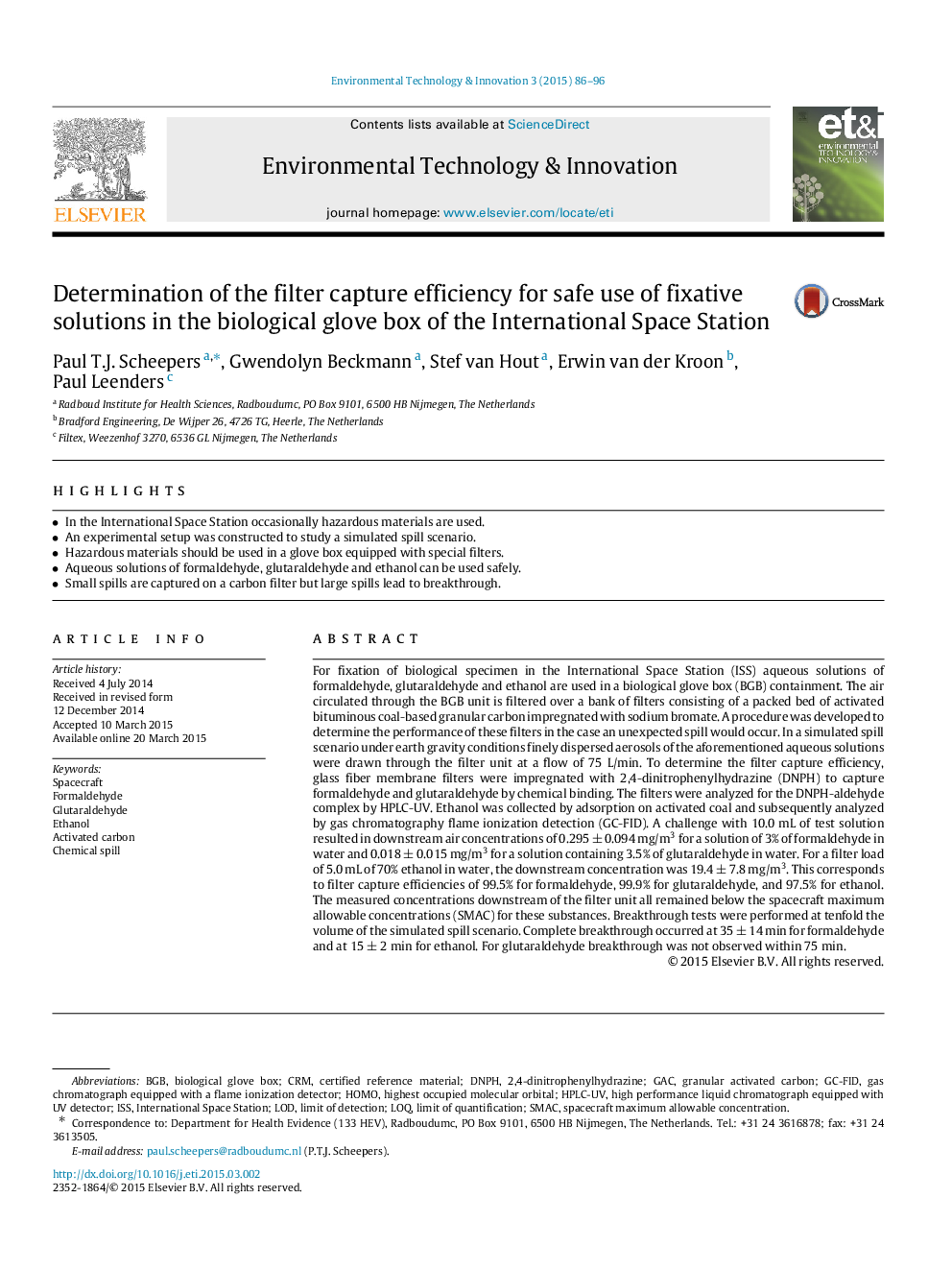| کد مقاله | کد نشریه | سال انتشار | مقاله انگلیسی | نسخه تمام متن |
|---|---|---|---|---|
| 4428179 | 1619285 | 2015 | 11 صفحه PDF | دانلود رایگان |
• In the International Space Station occasionally hazardous materials are used.
• An experimental setup was constructed to study a simulated spill scenario.
• Hazardous materials should be used in a glove box equipped with special filters.
• Aqueous solutions of formaldehyde, glutaraldehyde and ethanol can be used safely.
• Small spills are captured on a carbon filter but large spills lead to breakthrough.
For fixation of biological specimen in the International Space Station (ISS) aqueous solutions of formaldehyde, glutaraldehyde and ethanol are used in a biological glove box (BGB) containment. The air circulated through the BGB unit is filtered over a bank of filters consisting of a packed bed of activated bituminous coal-based granular carbon impregnated with sodium bromate. A procedure was developed to determine the performance of these filters in the case an unexpected spill would occur. In a simulated spill scenario under earth gravity conditions finely dispersed aerosols of the aforementioned aqueous solutions were drawn through the filter unit at a flow of 75 L/min. To determine the filter capture efficiency, glass fiber membrane filters were impregnated with 2,4-dinitrophenylhydrazine (DNPH) to capture formaldehyde and glutaraldehyde by chemical binding. The filters were analyzed for the DNPH-aldehyde complex by HPLC-UV. Ethanol was collected by adsorption on activated coal and subsequently analyzed by gas chromatography flame ionization detection (GC-FID). A challenge with 10.0 mL of test solution resulted in downstream air concentrations of 0.295 ± 0.094 mg/m3 for a solution of 3% of formaldehyde in water and 0.018 ± 0.015 mg/m3 for a solution containing 3.5% of glutaraldehyde in water. For a filter load of 5.0 mL of 70% ethanol in water, the downstream concentration was 19.4 ± 7.8 mg/m3. This corresponds to filter capture efficiencies of 99.5% for formaldehyde, 99.9% for glutaraldehyde, and 97.5% for ethanol. The measured concentrations downstream of the filter unit all remained below the spacecraft maximum allowable concentrations (SMAC) for these substances. Breakthrough tests were performed at tenfold the volume of the simulated spill scenario. Complete breakthrough occurred at 35 ± 14 min for formaldehyde and at 15 ± 2 min for ethanol. For glutaraldehyde breakthrough was not observed within 75 min.
Journal: Environmental Technology & Innovation - Volume 3, April 2015, Pages 86–96
